In today’s modern banking world, designs and technology change rapidly, along with the growing needs of consumers. Financial institutions are serving consumer transactions in a few ways:
- Traditional teller lines
- Pods
- Cash bars
So, what are some advantages and disadvantages when using each of these systems? Check them out!
Teller Lines
Financial institutions first started with traditional teller lines, large counters separating tellers from consumers that are specifically designated to complete transactions. What makes this original banking system work, yet may fall behind in modern times?
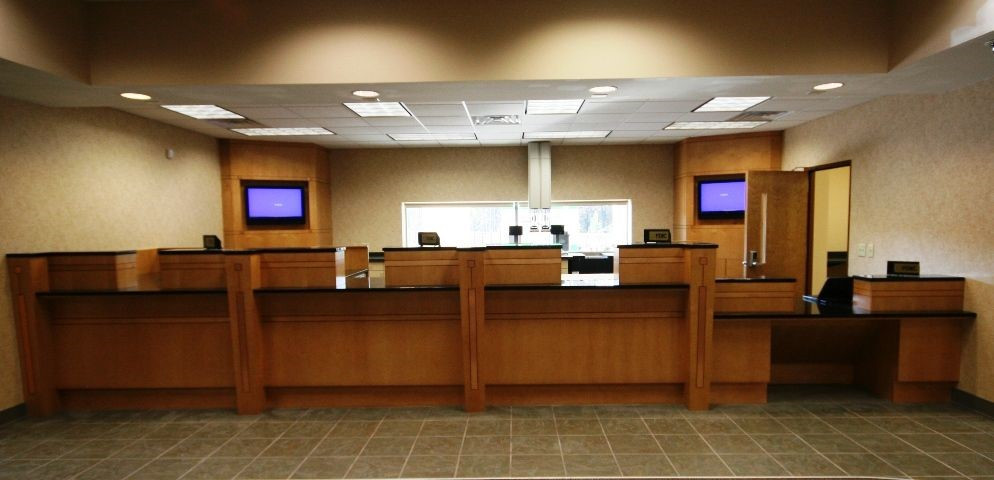
Advantages
Branches that process a larger number of transactions are more likely to have traditional teller lines. For larger branches that process a high number of transactions, the teller line system is an oldie but goodie. There is a streamlined process that allows consumers to walk in and know exactly where to go. Confusion is eliminated, causing some consumers to like this more formal, traditional design. While men tend to use teller lines more than women, women handle the same amount of transactions but for lesser amounts of money. When it comes to safety and security, staff and cash tend to be better-protected behind teller lines with bulletproof options.
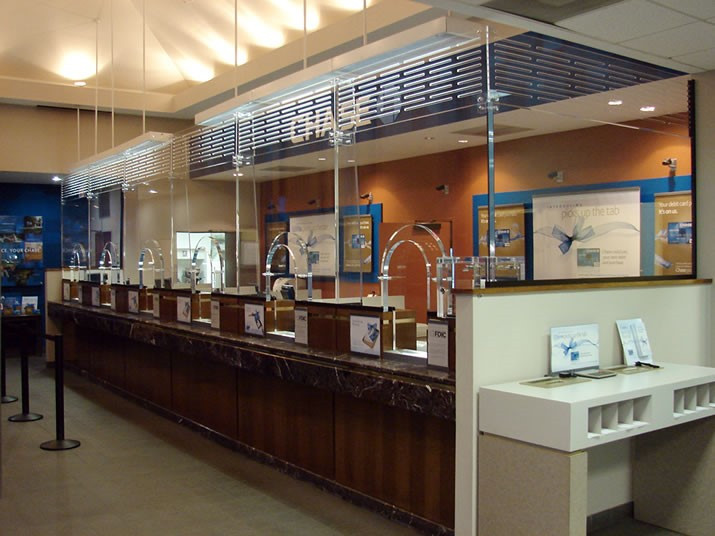
Disadvantages
Traditional teller lines make the consumer experience much more formal: the teller stands behind the long desk, waiting to help the next person in line. There aren’t too many exciting aspects of this model. For smaller branches, teller lines can take up too much space and create more barriers. More barriers evoke a sense of formality, something modern generations may not want when they enter the branch. With innovations in technology and design trends, traditional teller lines can fall flat.
Pods
Current design trends point to an open floor plan, removing large barriers and replacing them with teller pods. How do pods give the consumer a better experience?
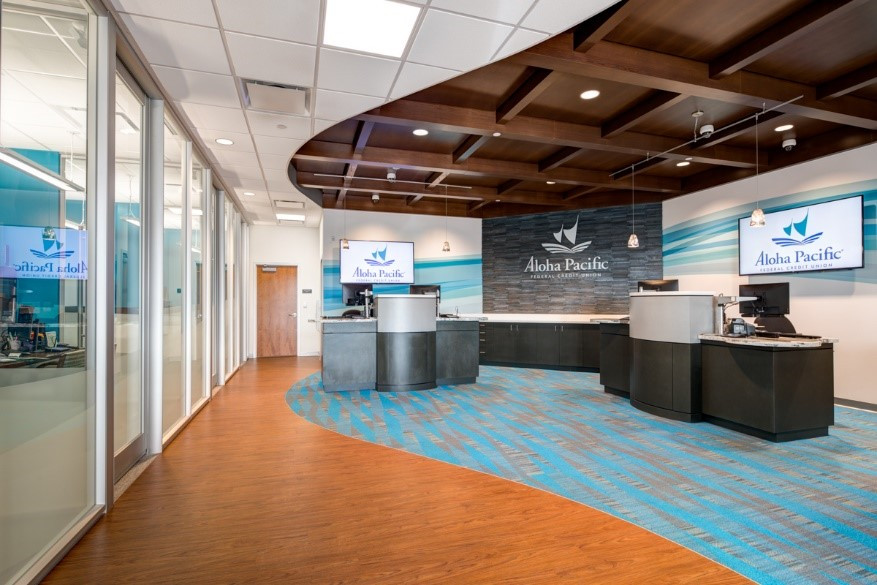
Advantages
Since barriers are taken away, pods allow the consumer to feel more comfortable approaching employees for help. Pods create a more casual, dynamic approach when serving consumers. Unlike the traditional teller line, pods allow for a flexible, standing environment, giving employees and consumers more ways to move around the branch as needed. With a more personal approach, organizations who used pods usually implement a universal banker model. The universal banker does everything from welcoming the consumer as they walk in, to performing all types of transactions. Pods ignite a more innovative, consumer-centric experience, focusing more on relationships, available products, and services than just simple transactions
Disadvantages
With an open branch concept, consumers may lose their way in the branch if no greeter is present or the path to services is not defined. Someone must help guide consumers as they first walk in the branch to eliminate any possible confusion. For some transactions, consumers need a higher level of privacy—something pods can lack. Having privacy dividers or more space between pods gives consumers ways to conduct business while still maintaining their privacy. At times, more in-depth discussions about topics like mortgage loans or financial portfolios are still better off in a more private area. Design is critical.
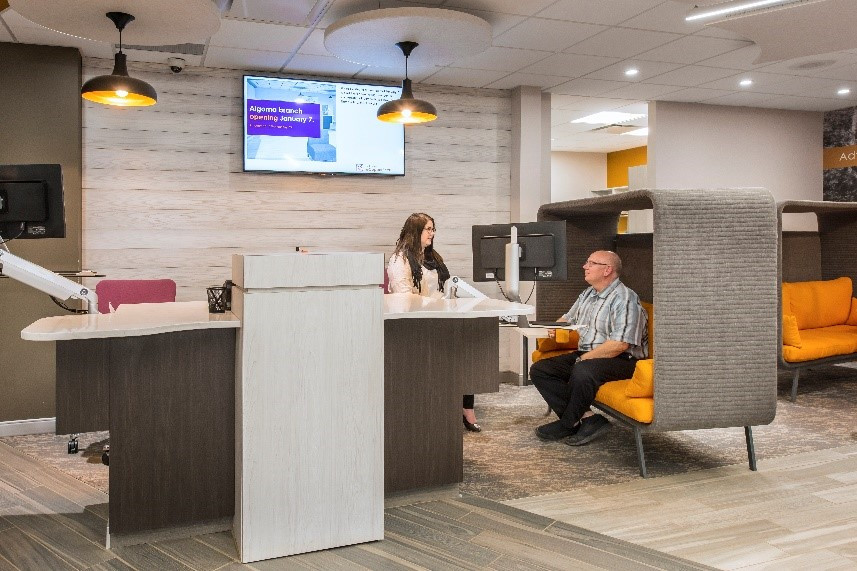
Cash Bars
Many financial institutions have successfully embraced cash bars in lieu of a traditional teller line or pods, and as a result, these transaction areas are being incorporated into many of our designs.
Advantages
Cash bars allow staff easy access and free movement from behind the teller pod to engage the consumer and determine whether their need is a quick transaction or a need for more privacy in a “hotel” office. Embracing new cash handling technologies will transform outdated systems and free staff to have more time for more advice-oriented interactions with consumers, thus building relationships.
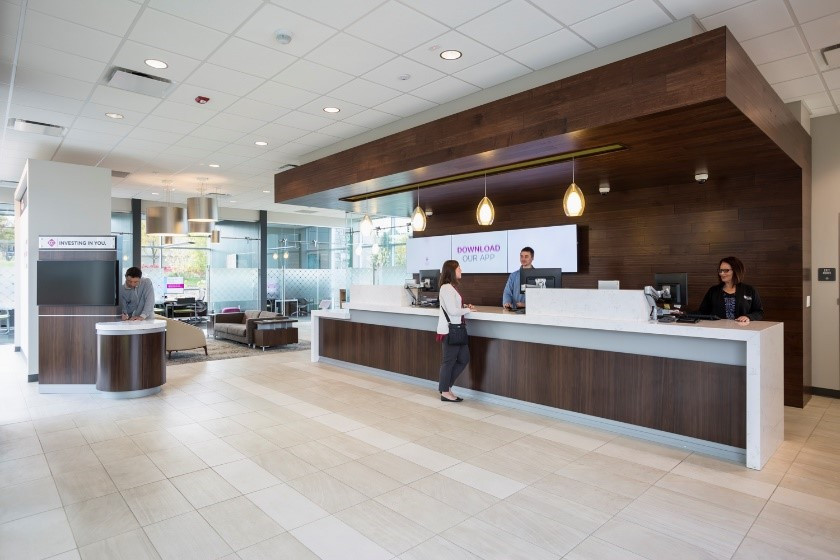
The introduction of the cash bar concept utilizes teller cash recyclers, reducing the amount of time used on each transaction, and freeing up staff for more consultations. The open-ended cash bar also allows freedom to move in and out of the Transaction Zone. More counter space allows consumers and staff to spread out. As a bonus, there tends to be more storage room available for lockers, personal items, and more.
Disadvantages
Aesthetically, cash bars can look somewhat similar to teller lines. Staff still needs to navigate around the counters, yet the overall design of the cash bar is a happy medium between teller lines and pods. With more of an open concept design, perceived privacy of cash bars creates some apprehension for the consumer. This means more private, personal conversations and transactions are still best conducted elsewhere.